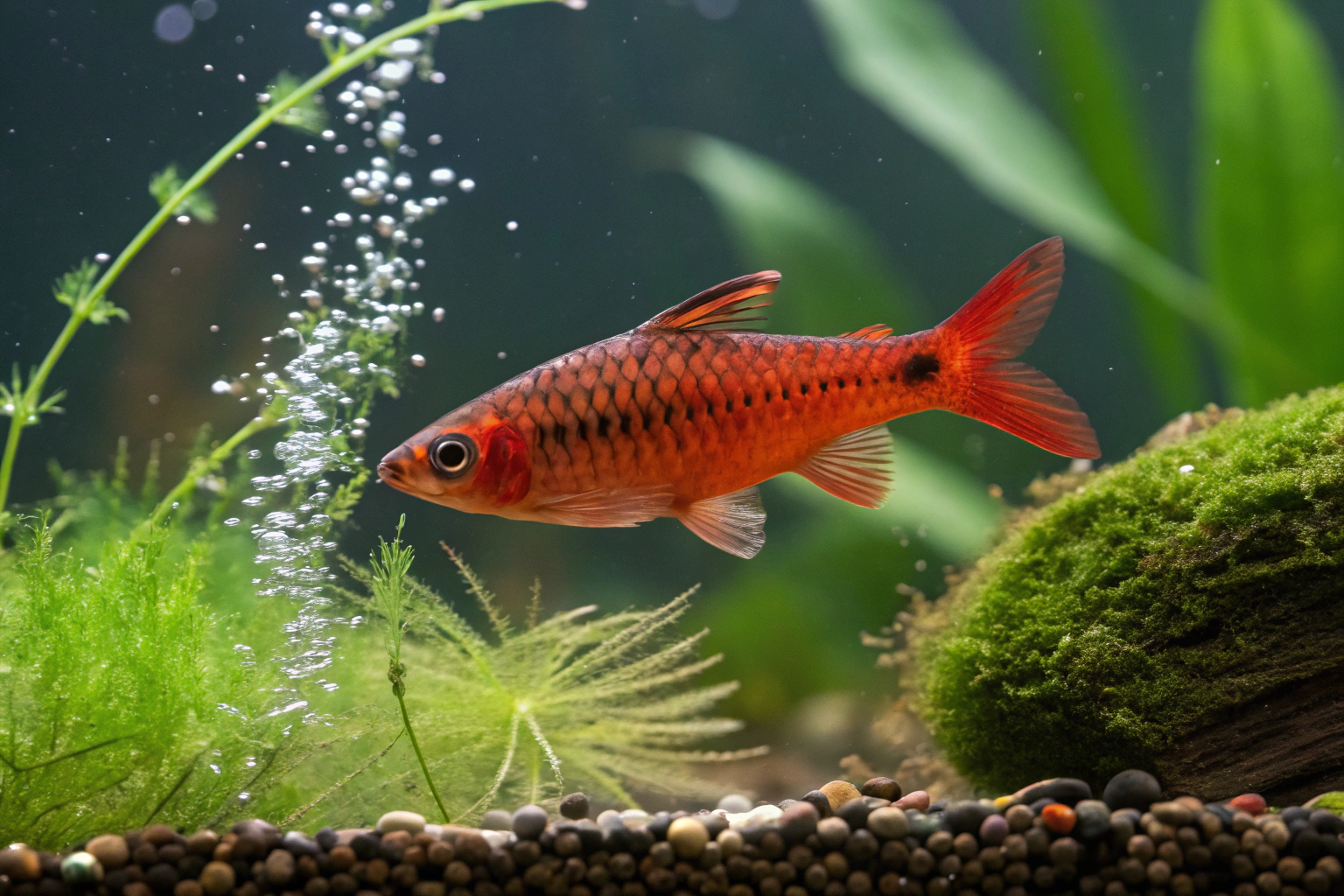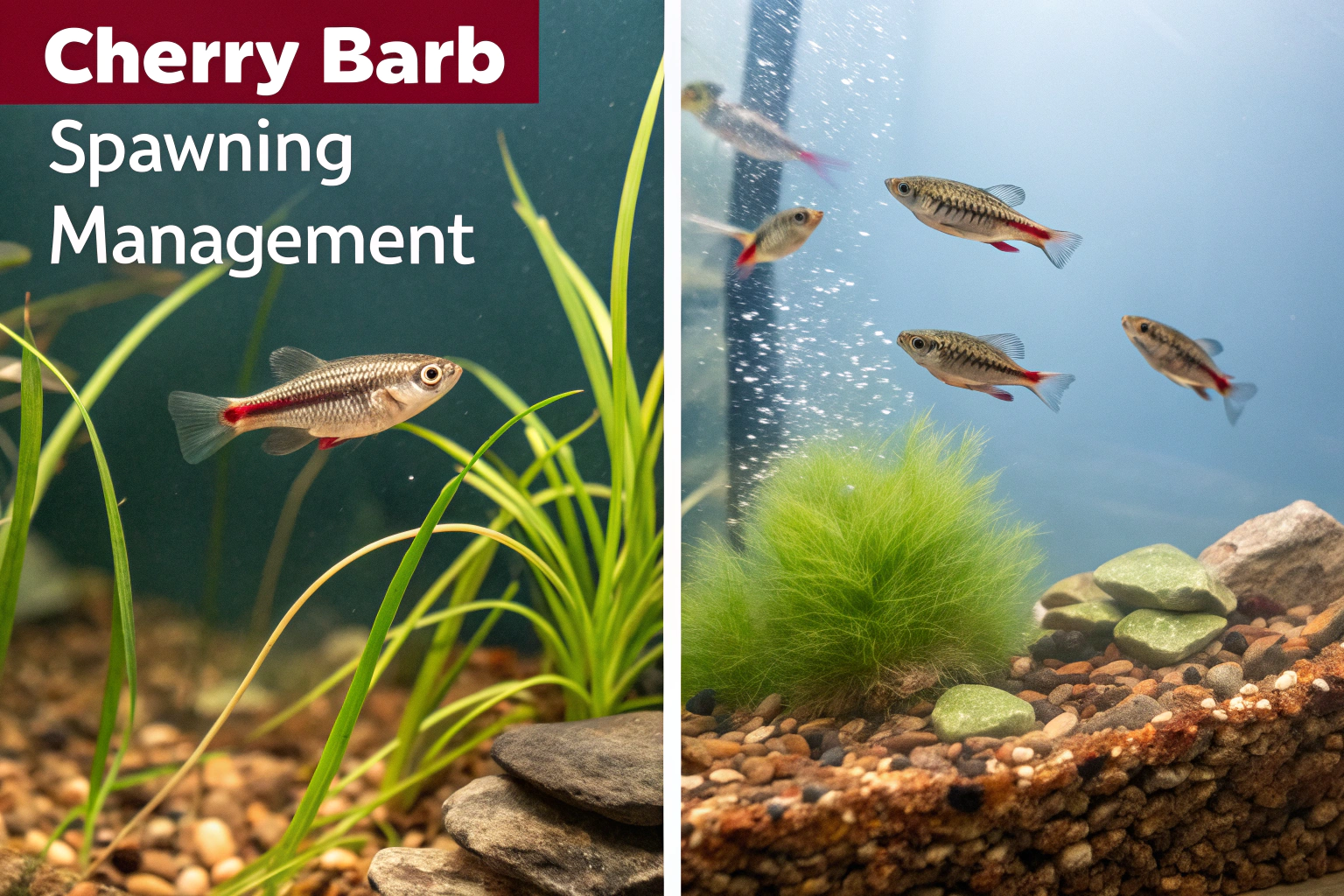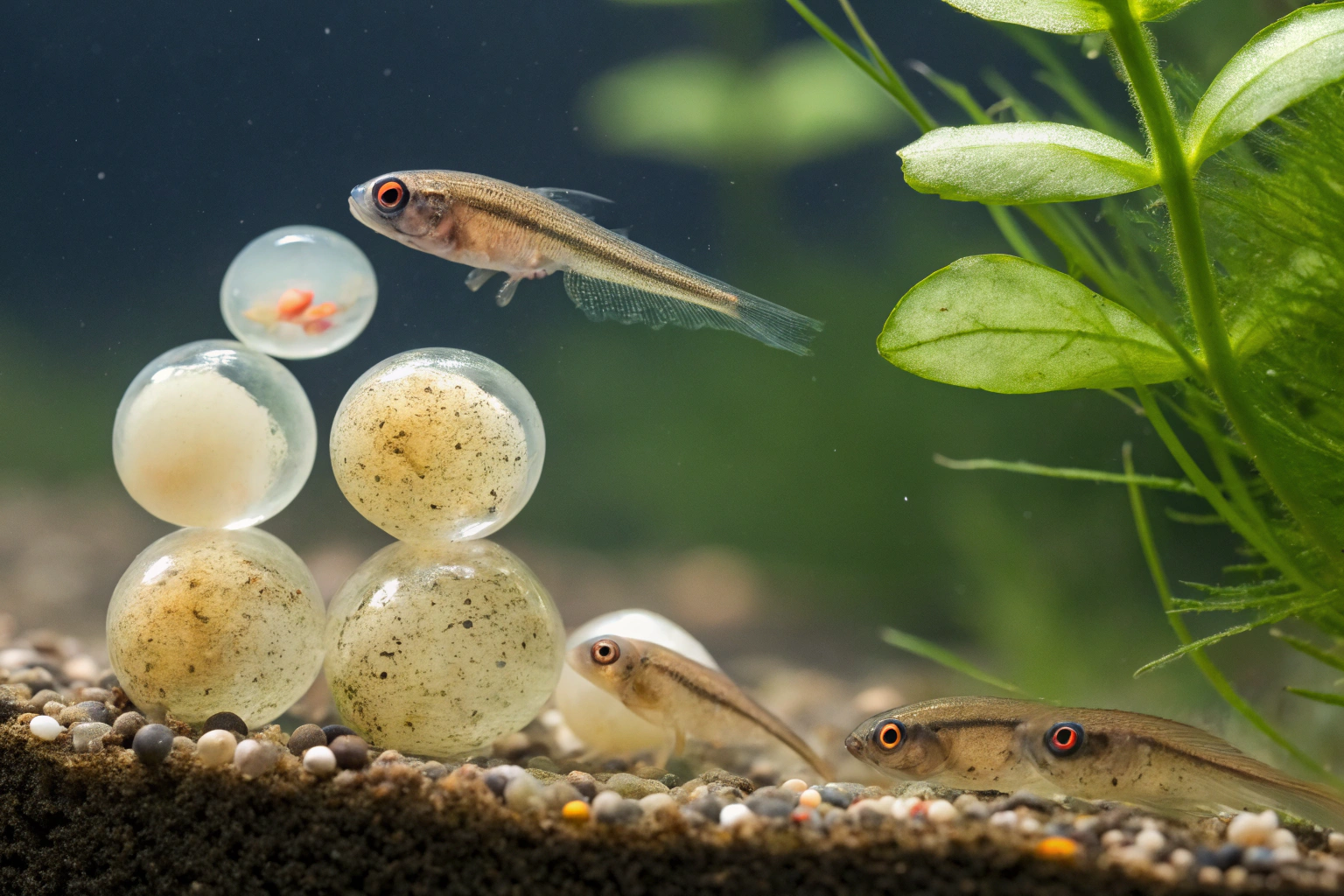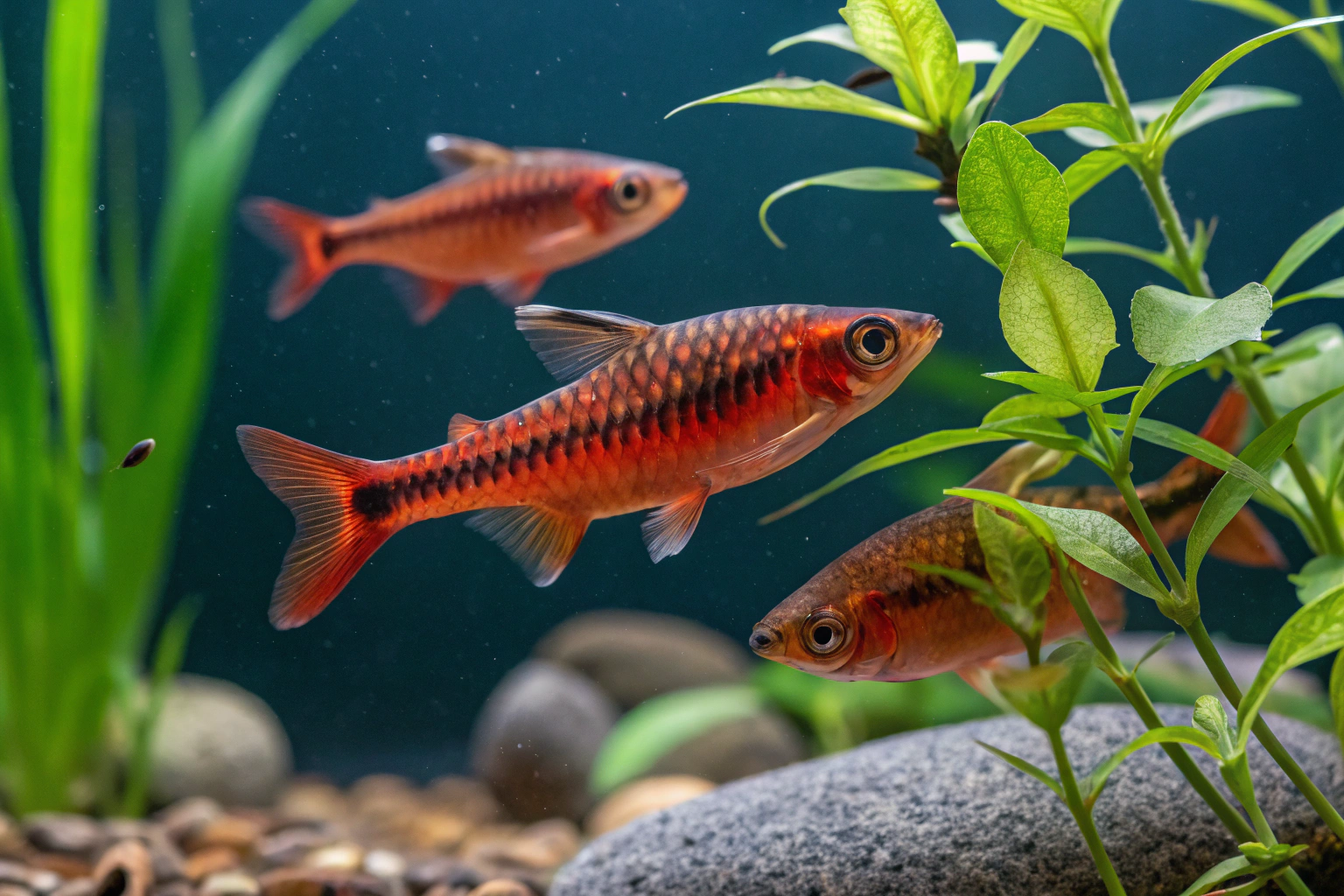What Should You Do When Your Cherry Barb Fish Start Spawning? Your Complete Action Guide
This post may contain affiliate links.
Discovering that your Cherry Barb fish are spawning can be both exciting and overwhelming for aquarium enthusiasts. These vibrant freshwater fish species display fascinating breeding behaviors that require immediate and careful attention to ensure successful reproduction. Whether you’re a beginner witnessing your first spawning event or an experienced aquarist looking to optimize your breeding success, this comprehensive guide will walk you through every critical step you need to take when your Cherry Barbs begin their reproductive process.
Understanding what to do during Cherry Barb spawning is crucial because these fish are egg scatterers with no parental instincts, meaning adult fish will readily consume their own eggs and fry if given the opportunity. Quick, decisive action during the spawning process can mean the difference between a successful breeding event and complete reproductive failure.

Recognizing Cherry Barb Spawning Behavior: Critical Signs to Watch For
Pre-Spawning Indicators
Before diving into action steps, it’s essential to recognize the telltale signs that your Cherry Barbs are preparing to spawn. Males become significantly more vibrant, displaying intense cherry-red coloration that’s far more pronounced than their normal appearance. Their behavior shifts dramatically as they begin territorial displays and persistent courtship of females.
Females preparing to spawn develop noticeably fuller, rounder bellies when viewed from above, indicating egg development. They may appear slightly sluggish and seek out potential spawning sites among fine-leaved aquatic plants or spawning media. The pair or group will begin investigating plant matter, swimming in synchronized patterns, and displaying increased activity levels during early morning hours.
Active Spawning Recognition
Active spawning typically occurs during dawn hours and presents unmistakable visual cues. Males intensify their red coloration to brilliant crimson levels while pursuing females relentlessly around spawning sites. The female will position herself among plants or spawning mops, releasing eggs while the male follows closely to fertilize them immediately.
During active spawning, you’ll observe rapid, jerky movements as eggs are scattered throughout the spawning medium. This process can continue for 1-3 hours, with females potentially releasing 200-400 eggs depending on their size and condition. The spawning behavior is instinctive and intense, making it relatively easy to identify once you know what to observe.
Immediate Actions During Active Spawning
Step 1: Observe Without Interfering
Your first instinct might be to intervene, but the most critical initial step is careful observation without disturbing the spawning process. Sudden movements, bright lights, or tank disturbances can interrupt spawning behavior and cause stress that prevents successful egg fertilization. Position yourself where you can monitor the process without casting shadows or creating vibrations near the breeding aquarium setup.
Document the spawning time, duration, and behavior patterns for future reference. This information becomes invaluable for understanding your fish’s breeding cycles and optimizing future spawning conditions. Take notes on water parameters, temperature, and environmental conditions that triggered the spawning event.
Step 2: Prepare for Post-Spawning Actions
While observing the spawning process, begin preparing the materials you’ll need immediately afterward. Have a fish net ready for adult fish removal, ensure your aquarium heater is functioning properly, and verify that your gentle filtration system is operating without creating strong currents that could damage eggs.
Prepare any necessary water treatment chemicals like methylene blue or antifungal treatments that may be needed to prevent egg fungus. Having these materials ready ensures you can act quickly once spawning concludes without scrambling to locate essential supplies.

Critical Post-Spawning Actions
Immediate Adult Fish Removal
The moment spawning activity ceases, your highest priority becomes removing adult fish from the breeding tank. Cherry Barbs have absolutely no parental instincts and will immediately begin consuming their own eggs if allowed to remain in the spawning area. This removal must happen within 30-60 minutes of spawning completion to prevent egg predation.
Use a soft mesh net to gently catch adult fish, being careful not to disturb settled eggs. Move adults back to their main aquarium or a separate holding tank with similar water parameters. The stress of spawning and relocation requires stable conditions to prevent post-spawning health issues in breeding stock.
Egg Assessment and Water Management
After adult removal, carefully assess the spawning success by looking for small, clear, sticky eggs attached to plant matter or spawning substrates. Healthy Cherry Barb eggs appear transparent with visible internal development, while unfertilized or damaged eggs typically appear opaque white or develop fuzzy fungal growth within 24 hours.
Maintain water temperature at 78-80°F (25.5-26.5°C) using a reliable aquarium thermometer to ensure optimal egg development. Avoid any water changes or major disturbances during the first 48 hours, as eggs are extremely fragile during initial development stages.

Optimizing Egg Development Conditions
Water Quality Management
Pristine water quality becomes absolutely critical for successful egg development and hatching. Cherry Barb eggs are sensitive to water parameter fluctuations, requiring stable conditions throughout the 24-48 hour incubation period. Monitor ammonia, nitrite, and nitrate levels closely using comprehensive water test kits to ensure parameters remain within safe ranges.
Gentle water circulation prevents egg suffocation while avoiding strong currents that could dislodge or damage developing embryos. A sponge filter or air stone provides adequate oxygenation without creating destructive water movement. Maintain pH between 6.0-7.0 and water hardness between 5-15 dGH for optimal development conditions.
Lighting and Environmental Control
Subdued lighting during egg development reduces stress and mimics natural spawning conditions. Bright lights can cause temperature fluctuations and may negatively impact egg viability. Use adjustable LED aquarium lighting set to low intensity or cover the tank partially to create dimmed conditions.
Temperature stability is crucial, as fluctuations of even 2-3°F can cause developmental problems or egg mortality. Position backup heating systems if necessary to prevent temperature drops that commonly occur during nighttime hours or air conditioning cycles.
Managing the Hatching Process
Recognizing Hatching Signs
Cherry Barb eggs typically hatch within 24-48 hours at optimal temperatures. As hatching approaches, you may notice slight movement within eggs or see tiny fry beginning to emerge. Newly hatched fry remain attached to surfaces by their yolk sacs for 3-4 days, appearing as small, translucent creatures with prominent eye spots.
During this critical period, maintain absolute water stability and avoid any tank maintenance that could disturb the delicate fry. The yolk sac provides all necessary nutrition during these first days, so feeding is not only unnecessary but potentially harmful to water quality.
First Week Fry Care
Once fry become free-swimming (typically 4-5 days post-hatching), they require immediate feeding with appropriately sized foods. Infusoria cultures, liquid fry foods, or specially prepared egg yolk solutions provide essential nutrition for newly mobile fry.
Feed tiny amounts multiple times daily, monitoring water quality closely as fry food can quickly pollute small breeding tanks. Remove any uneaten food after 30 minutes to prevent water quality deterioration that can kill entire fry populations.
Common Spawning Problems and Solutions
Interrupted Spawning Events
Sometimes spawning behavior begins but doesn’t complete successfully due to environmental disturbances, poor conditioning, or water quality issues. If spawning stops abruptly, avoid the temptation to manipulate conditions immediately. Instead, maintain stable parameters and allow fish to recover from the stress of interrupted breeding behavior.
Proper fish conditioning with high-quality foods for 1-2 weeks often resolves spawning interruptions caused by nutritional deficiencies. Ensure breeding pairs are properly separated from other tank inhabitants that might cause stress or competition during spawning attempts.
Egg Fungus and Mortality
Fungal infections represent the most common cause of egg mortality in Cherry Barb breeding. White, fuzzy growth on eggs indicates fungal problems that can spread rapidly through the entire clutch. Methylene blue treatment or specialized antifungal medications can help prevent fungal spread when applied according to manufacturer instructions.
Prevention remains more effective than treatment, focusing on maintaining excellent water quality, removing dead or unfertilized eggs promptly, and ensuring adequate water circulation around egg masses. Some breeders add indian almond leaves or other natural antifungal agents to breeding tanks as preventative measures.

Advanced Spawning Management Techniques
Multiple Spawning Events
Cherry Barbs can spawn multiple times throughout the breeding season, often every 1-2 weeks under optimal conditions. Managing multiple spawning events requires careful planning and multiple tank systems to accommodate different developmental stages simultaneously.
Experienced breeders often maintain separate fry rearing systems to isolate different age groups and prevent competition between fry of varying sizes. This approach maximizes survival rates and allows for more controlled feeding and growth management.
Record Keeping and Breeding Data
Maintaining detailed records of spawning events, environmental conditions, and success rates helps optimize future breeding attempts. Document water parameters, temperature, feeding regimens, and any environmental changes that preceded successful spawning events.
This data becomes invaluable for understanding your specific fish’s breeding patterns and preferences, allowing you to recreate successful conditions consistently. Many successful breeders use aquarium management software or simple spreadsheets to track breeding success over time.
Preparing for Future Spawning Events
Breeding Stock Management
After successful spawning, allow breeding pairs adequate recovery time before attempting subsequent breeding events. Intensive spawning can stress fish significantly, requiring 2-3 weeks of excellent nutrition and stable conditions before they’re ready for another breeding cycle.
Monitor breeding stock health closely, watching for signs of exhaustion, weight loss, or behavioral changes that indicate the need for extended recovery periods. High-quality protein foods help restore energy reserves and prepare fish for future reproductive success.
Equipment Maintenance and Preparation
Between spawning events, thoroughly clean and maintain all breeding equipment to prevent disease transmission and ensure optimal conditions for future attempts. Sterilize spawning mops, replace filter media, and test all equipment functionality.
Having backup equipment readily available prevents spawning failures due to equipment malfunctions during critical breeding periods. This includes spare heaters, filters, and emergency air pumps that can maintain life support systems during power outages or equipment failures.
Maximizing Long-Term Breeding Success
Environmental Consistency
Successful Cherry Barb breeding programs rely heavily on environmental consistency rather than constant manipulation of conditions. Once you identify parameters that trigger successful spawning, maintain those conditions consistently rather than experimenting with frequent changes.
Stable lighting cycles, consistent feeding schedules, and predictable water change routines help establish breeding cycles that become more reliable over time. Fish that experience consistent conditions often develop more predictable spawning patterns that make management significantly easier.
Community and Resources
Connecting with other Cherry Barb breeders through online aquarium communities and local aquarium societies provides valuable support and knowledge sharing opportunities. Experienced breeders often share insights about local water conditions, seasonal variations, and specific techniques that improve breeding success rates.
Many successful breeding programs benefit from mentorship relationships with experienced aquarists who can provide guidance during challenging situations or help troubleshoot problems that arise during spawning events.

Conclusion: Mastering Cherry Barb Spawning Management
Successfully managing Cherry Barb spawning requires quick recognition, immediate appropriate action, and careful attention to detail throughout the entire process. The key lies in understanding that these fish are opportunistic breeders with no parental instincts, making human intervention absolutely essential for reproductive success.
Remember that each spawning event provides valuable learning opportunities, even when outcomes aren’t perfect. The combination of proper preparation, quick decisive action during spawning, and meticulous post-spawning care creates the foundation for consistent breeding success with these beautiful freshwater fish.
By following these comprehensive guidelines and maintaining detailed records of your experiences, you’ll develop the expertise needed to successfully manage Cherry Barb spawning events and enjoy the rewarding experience of raising these vibrant fish from egg to adult. The investment in proper technique and equipment pays dividends in the form of healthy fry populations and the satisfaction of successful freshwater fish breeding.
For additional guidance on advanced fish breeding techniques, fry rearing systems, and breeding equipment selection, explore our comprehensive collection of expert breeding resources and community-supported breeding programs.
